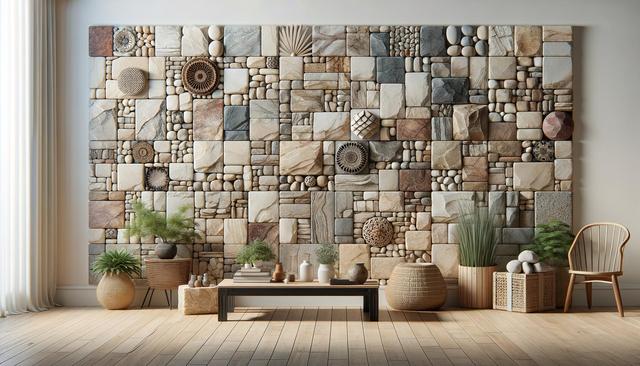
Transforming Spaces with Faux Stone Panels
What Are Faux Stone Panels?
Faux stone panels are decorative wall coverings designed to mimic the appearance and texture of natural stone. Made from lightweight yet durable materials such as polyurethane or high-density foam, these panels are manufactured to replicate the look of real stone with impressive detail. Unlike genuine stone, which can be heavy and costly to install, faux stone panels provide a cost-effective and manageable alternative for homeowners and commercial spaces alike. Their versatility makes them suitable for both indoor and outdoor applications, offering a wide range of styles, colors, and finishes to suit various design preferences.
These panels are often used in home renovation projects where a rustic or earthy aesthetic is desired. They can be applied over existing surfaces, which minimizes the need for structural changes. Most panels are designed to interlock or fit seamlessly, creating a continuous, natural-looking surface. Additionally, because they are resistant to moisture and temperature changes, faux stone panels are ideal for kitchens, fireplaces, patios, and accent walls.
Benefits of Using Faux Stone Panels
There are numerous advantages to choosing faux stone panels over traditional building materials. One of the most significant benefits is ease of installation. These panels are typically lightweight, which reduces the need for heavy-duty tools or professional assistance. Many homeowners find that a basic understanding of tools and some DIY skills are enough to complete a faux stone panel project successfully.
Some other key benefits include:
- Cost efficiency compared to natural stone or brick.
- Low maintenance requirements.
- Durability and resistance to cracking, chipping, and fading.
- Wide variety of styles to match contemporary, classic, or rustic themes.
- Environmentally friendly options available with recycled materials.
These panels not only enhance visual appeal but also add a layer of insulation to walls, improving energy efficiency. Whether you’re updating a living room or designing a commercial storefront, faux stone panels can help achieve a professional and polished look.
Popular Applications in Interior Design
Faux stone panels are being increasingly integrated into interior design due to their adaptability and aesthetic value. They can be used to create striking accent walls in living rooms, bedrooms, and entryways. Designers often choose these panels to add depth and contrast to spaces without overpowering the overall decor.
Common interior uses of faux stone panels include:
- Fireplace surrounds that serve as a focal point in the room.
- Kitchen backsplashes for a rustic or industrial vibe.
- Bathroom walls to evoke a spa-like atmosphere.
- Home bars or wine cellars for a cozy, old-world feel.
These panels can also be painted or stained to match specific color schemes, making them a flexible choice for custom interiors. Their ability to mimic different stone types—such as slate, limestone, or river rock—makes it easier to achieve a high-end look without the associated costs and labor.
Exterior Uses and Weather Resistance
Thanks to advancements in manufacturing, faux stone panels are increasingly found in outdoor settings. They are designed to withstand various weather conditions, including rain, snow, and extreme temperatures. This makes them suitable for cladding on the exterior of homes, garages, outdoor kitchens, and garden walls.
Exterior applications often include:
- Enhancing curb appeal with stone-like facades.
- Covering foundation walls or outdoor fireplaces.
- Creating feature walls in patios or backyard seating areas.
- Adding texture to pillars, columns, or entryways.
Another advantage is that faux stone panels do not require sealing or regular upkeep like real stone. They are UV-resistant and designed to maintain their appearance over time. Installation typically involves adhesive and screws, making it both secure and relatively simple.
Tips for Choosing and Installing Faux Stone Panels
When selecting faux stone panels, it’s important to consider the specific needs of your project. Start by identifying the style and color that complements your existing decor or exterior. Samples are often available and can help you visualize how the panels will look in your space. Make sure to measure accurately and account for any corners or irregular surfaces where special pieces may be required.
Installation tips include:
- Prepare the surface by cleaning and flattening it.
- Use construction adhesive for added bonding strength.
- Secure panels with screws, especially in outdoor or high-traffic areas.
- Use matching caulk or filler for seams and joints.
- Follow manufacturer instructions closely for the best results.
Some panels come with pre-designed corner pieces and trim, making it easier to achieve a professional finish. For large or complex applications, consulting a contractor may be helpful, but many homeowners find that faux stone panels are manageable even for beginners.
Conclusion: A Smart Choice for Stylish Living
Faux stone panels offer a practical and visually impactful solution for both interior and exterior design projects. Their blend of affordability, easy installation, and aesthetic appeal makes them a favored choice for homeowners looking to refresh their spaces without extensive renovations. Whether you’re updating a single wall or reimagining your home’s facade, these panels provide a reliable and attractive alternative to natural stone. With the right planning and execution, faux stone panels can significantly enhance the character and charm of any environment.


